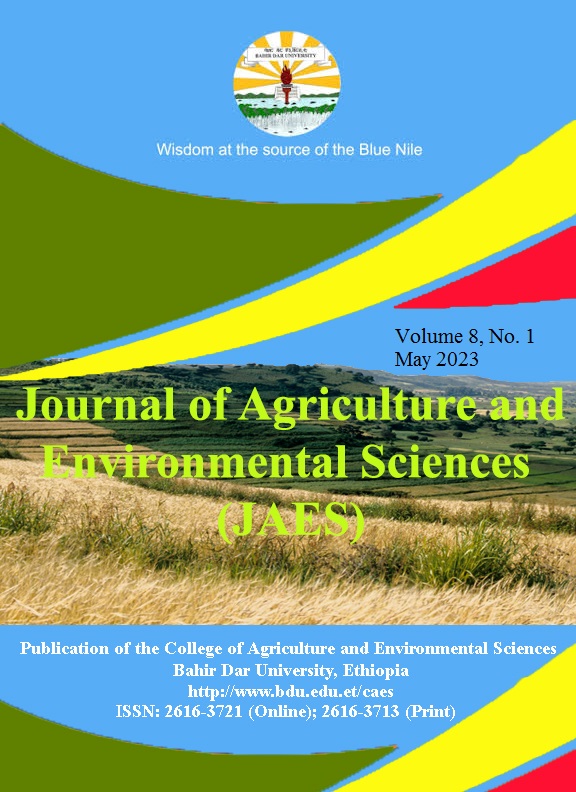Efficiency of the oestrus synchronization with hand mating and artificial insemination on the reproductive performances of Woyto-Guji Goat under community-based breeding program
Abstract
Abstract
The present study was designed to describe the efficiency of oestrus synchronization on Woyto-Guji goats under community-based breeding program in Konso zone. Single and double injections of PGF2α followed by AI and single injection followed by buck mating were the protocols applied. Percent responded, inseminated, conceived, delivered, aborted, time of insemination, gestation length and litter size were data collected for the experiment. A total of 177 does were used for oestrus synchronization by using PGF2α hormone. Overall, the findings revealed that about 88.14% of the does expressed oestrus within 57.48±2.64 hours after hormone administration. The overall percent inseminated, conceived, delivered and aborted and gestation length (day) were 91.67, 93.71, 72.03, 2.82%, and 152.48±2.34, respectively. The overall percent of kid sex born was about 51% female and 49% male, and litter size was about 58% single and 42% twin. The response rate was significantly affected by age (P<0.05). Percent inseminated, conceived, kid delivered and time of insemination were significantly affected by protocol, parity and age (P<0.05). Buck mating on hormone treated does was relatively easily applicable for increased conception rate under the community level.
Copyright (c) 2023 Journal of Agriculture and Environmental Sciences

This work is licensed under a Creative Commons Attribution-NonCommercial-NoDerivatives 4.0 International License.
Authors who publish with this journal agree to the following terms:
- Authors retain copyright and grant the journal right of first publication with the work simultaneously licensed under a Creative Commons Attribution License that allows others to share the work with an acknowledgement of the work's authorship and initial publication in this journal.
- Authors are able to enter into separate, additional contractual arrangements for the non-exclusive distribution of the journal's published version of the work (e.g., post it to an institutional repository or publish it in a book), with an acknowledgement of its initial publication in this journal.
Authors are permitted and encouraged to post their work online (e.g., in institutional repositories or on their website) prior to and during the submission process, as it can lead to productive exchanges, as well as earlier and greater citation of published work (See The Effect of Open Access).


